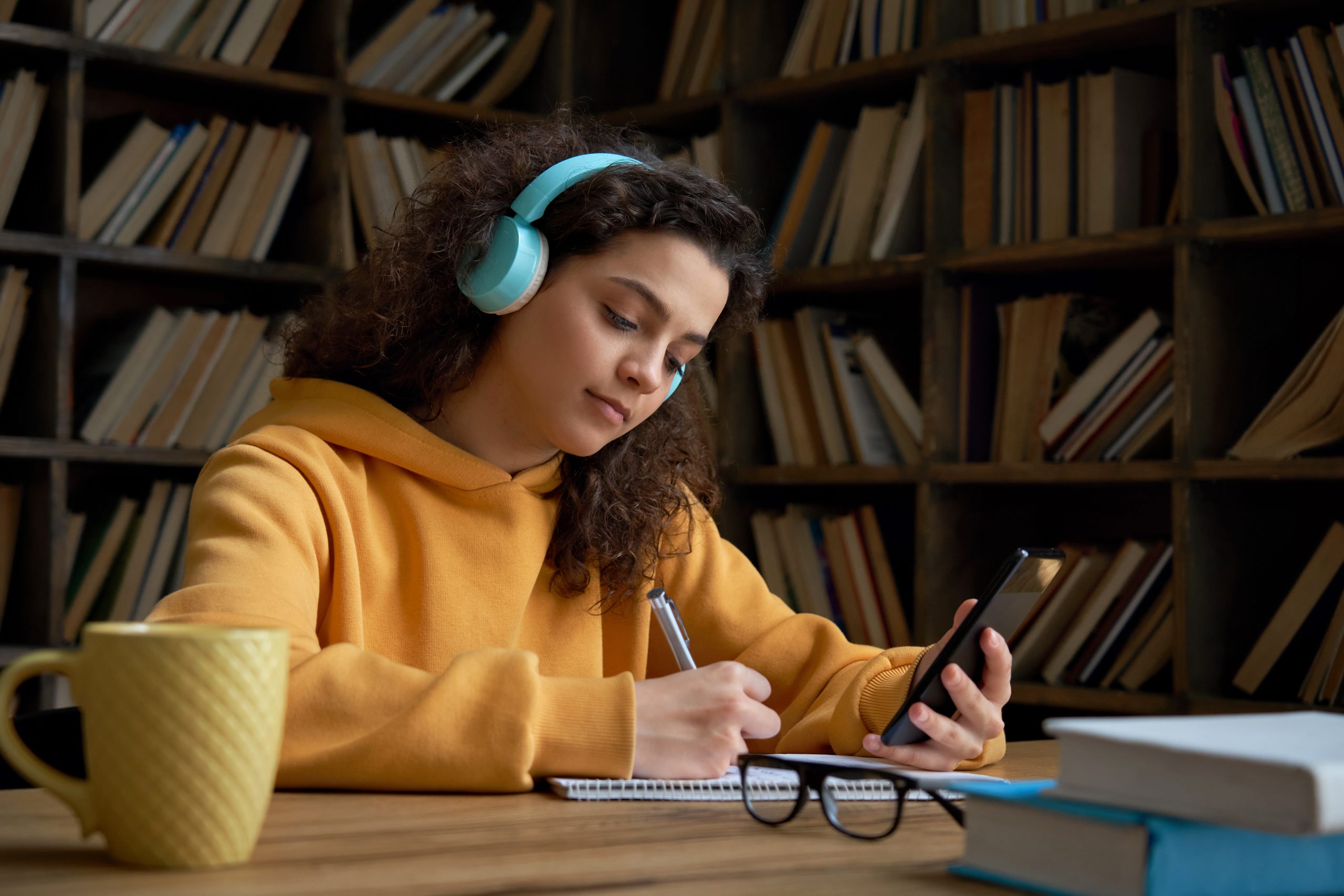Principle 1: Multiple Means of Engagement
The Why of Learning
Allows students to demonstrate and connect with their learning in different ways. It can involve offering choices, incorporating interactive activities, and tapping into individual interests, passions, and cultural backgrounds.
Provide options for recruiting interest (maintaining focus)
Students differ in how they are engaged and what stimulates their attention. Their interests can also change as they progress in their academic journey and build new skills. When designing course materials, it is important to think of ways to engage learners in multiple ways.
Guiding Sociology students to plan and monitor their learning with strategic goal-setting and real-time feedback
Checkpoints of interest 6.1: Guide appropriate goal-setting 6.2: Support planning and strategy development 6.4: Enhance capacity for monitoring progress 7.1: Optimize individual choice and autonomy 7.3: Minimize threats and distractions Bruce Ravelli is committed...
Bringing Theatre history to life with multimodal strategies
Checkpoints of interest 1.3: Offer alternatives for visual information 5.1: Use multiple media for communication 7.2: Optimize relevance, value, and authenticity In Theatre 111: Theatre History 1, Sasha Kovacs immerses students in the creative world of theatre...
Using interactive night labs and creative assignments in Astronomy to cater to diverse interests
Checkpoints of interest 7.1 Optimize individual choice and autonomy 7.2 Optimize relevance, value, and authenticity 7.3 Minimize threats and distractions In the course Astronomy 101: Exploring the Night Sky, instructor Travis Martin guides students to embark on an...
Personalizing Computer Science programming with technology
Checkpoints of interest 7.1 Optimize individual choice and autonomy 7.2 Optimize relevance, value, and authenticity 7.3 Minimize threats and distractions 8.2 Vary demands and resources to optimize challenge 8.4 Increase mastery-oriented feedback Celina Berg uses a...
Provide options for sustaining effort and persistence
Students need to sustain effort and attention in order to learn. Motivation helps to regulate attention; however there are differences in how students self-regulate. Building skills of self-regulation and self-determination can happen when the external environment is supportive of learners.
Encouraging readiness and self-led learning in Math
Calculus students take a readiness assessment during the first tutorial to identify individual proficiencies and areas needing improvement.
Connecting concepts through storytelling and multimedia in Public Administration
Public Administration students immerse themselves in research, scriptwriting, visual synchronization, and narrative techniques through a digital storytelling assignment.
Personalizing Computer Science programming with technology
Computer programming students engage with personalized assessments, choosing datasets from TV, music, or sports to align with their interests.
Provide options for self regulation (controlling emotions)
Promoting both a motivating environment and fostering learners’ self-regulation skills is essential. Unfortunately, many classrooms neglect to teach self-regulation, making it inaccessible to some students. In order to be effective, address self-regulation directly, recognizing that individual differences require diverse strategies for managing engagement and emotions.
Supporting SMART goal setting and reflective practices in Health and Wellness Education
Exercise Science students undertake a lifestyle change project, setting SMART goals linked to wellness dimensions and critically reflecting on their progress using academic research.
Encouraging readiness and self-led learning in Math
Calculus students take a readiness assessment during the first tutorial to identify individual proficiencies and areas needing improvement.
Principle 2: Multiple Means of Representation
The What of learning
Includes presenting course content and information in multiple formats (visual, auditory and tactile), with the understanding that students perceive and comprehend information in different ways.
Provide options for perception
To facilitate effective learning, it’s essential that all information is easily perceivable and accessible to every learner. This can be achieved by:
- Delivering the same content through different sensory channels, such as visual, auditory, or tactile means.
- Providing customizable formats, like text that can be resized or sounds that can be increased in volume.
Implementing these varied and adaptable methods of presentation not only supports learners with specific sensory impairments but also enhances the overall accessibility and comprehension of the information for a wider audience.
Bringing Theatre history to life with multimodal strategies
Theatre Arts students physically and visually grasp traditional Bunraku puppetry techniques by combining descriptive videos with hands-on manipulation.
Simplifying mathematical notation in Calculus for enhanced understanding and accessibility
Math and Stats students learn to verbalize written work and notations to help understanding of complex content.
Integrating assistive technologies for diverse learning needs at UVic
Students registered with CAL can receive tailored consultations and training on how to utilize assistive technologies.
Engaging students in Chemistry through augmented reality
Organic chemistry students use an augmented reality app to enlarge, rotate, and manipulate molecular structures.
Provide options for language & symbols
Learners have different abilities in understanding various forms of representation, such as words and pictures. What helps one learner understand might confuse another, like an equals sign in math or a graph showing two variables. To avoid this inequality and make learning clear for everyone, it’s important to offer information in different ways, not just for accessibility, but also for better understanding.
Simplifying mathematical notation in Calculus for enhanced understanding and accessibility
Math and Stats students learn to verbalize written work and notations to help understanding of complex content.
Enhancing writing and language skills with visual aids and informal conversations at the CAC
Students visiting the CAC learn grammar patterns and properties using visual aids to illustrate constitutive elements of writing and order of importance.
Provide options for comprehension
The goal of education is to teach learners to turn available information into knowledge they can use, not just to make information accessible. This process is active, involving skills like:
- Focusing
- Connecting new information with what they already know
- Organizing information
- Memorizing.
Since individuals vary in these skills and in their existing knowledge, it’s crucial that the way we teach and present information helps everyone access and understand this knowledge.
Facilitating the application of French literary concepts through podcasting
French students are immersed in the exploration and analysis of a diverse range of literary works for young audiences using a podcast program.
Connecting concepts through storytelling and multimedia in Public Administration
Public Administration students immerse themselves in research, scriptwriting, visual synchronization, and narrative techniques through a digital storytelling assignment.
Simplifying mathematical notation in Calculus for enhanced understanding and accessibility
Math and Stats students learn to verbalize written work and notations to help understanding of complex content.
Enhancing writing and language skills with visual aids and informal conversations at the CAC
Students visiting the CAC learn grammar patterns and properties using visual aids to illustrate constitutive elements of writing and order of importance.
Principle 3: Multiple Means of Action and Expression
The How of learning
Uses a variety of ways to stimulate student engagement and interest in learning course content. It acknowledges that students possess unique strengths and preferences when it comes to communicating their knowledge.
Provide options for physical action
Textbooks and educational software often have limited ways to navigate or interact, like turning pages or using a joystick, which can be difficult for learners with disabilities. This includes those with physical disabilities, blindness, or other challenges that affect their ability to use these materials. To make learning accessible to everyone, it’s important to design materials that work well with assistive technologies, allowing for different ways of navigating and responding, like voice-activated systems or expanded keyboards.
Integrating assistive technologies for diverse learning needs at UVic
Students registered with CAL can receive tailored consultations and training on how to utilize assistive technologies.
Provide options for expression & communication
No single way of expressing ideas works well for everyone or for all types of communication. For example, a learner with dyslexia might be great at telling stories verbally but struggle with writing them down. Therefore, it’s important to offer different ways for learners to express themselves, to make sure everyone has an equal chance and can easily share their knowledge and ideas in their own best way.
Bringing Theatre history to life with multimodal strategies
Theatre Arts students physically and visually grasp traditional Bunraku puppetry techniques by combining descriptive videos with hands-on manipulation.
Enhancing writing and language skills with visual aids and informal conversations at the CAC
Students visiting the CAC learn grammar patterns and properties using visual aids to illustrate constitutive elements of writing and order of importance.
Provide options for executive functions
Human executive functions, centered in the prefrontal cortex, allow us to set and pursue long-term goals, not just react impulsively to immediate surroundings. However, these functions can be overwhelmed when too much effort is spent on basic, non-automatic skills, or when there’s a higher-level disability affecting executive capacity. To enhance learning, the Universal Design for Learning (UDL) framework suggests two strategies:
- Scaffold basic skills so they require less executive effort.
- Strengthen higher-level executive skills.
This approach helps learners efficiently manage both simple and complex tasks.
Guiding Sociology students to plan and monitor their learning with strategic goal-setting and real-time feedback
Sociology students get early access to exam questions and guiding rubrics which help guide goal setting and taking the mystery out of what they need to know.
Would you like to contribute to our examples?
We are always looking for more examples on how you use UDL in the classroom and beyond. Please contact us for further details on how to be involved in this initiative!
















